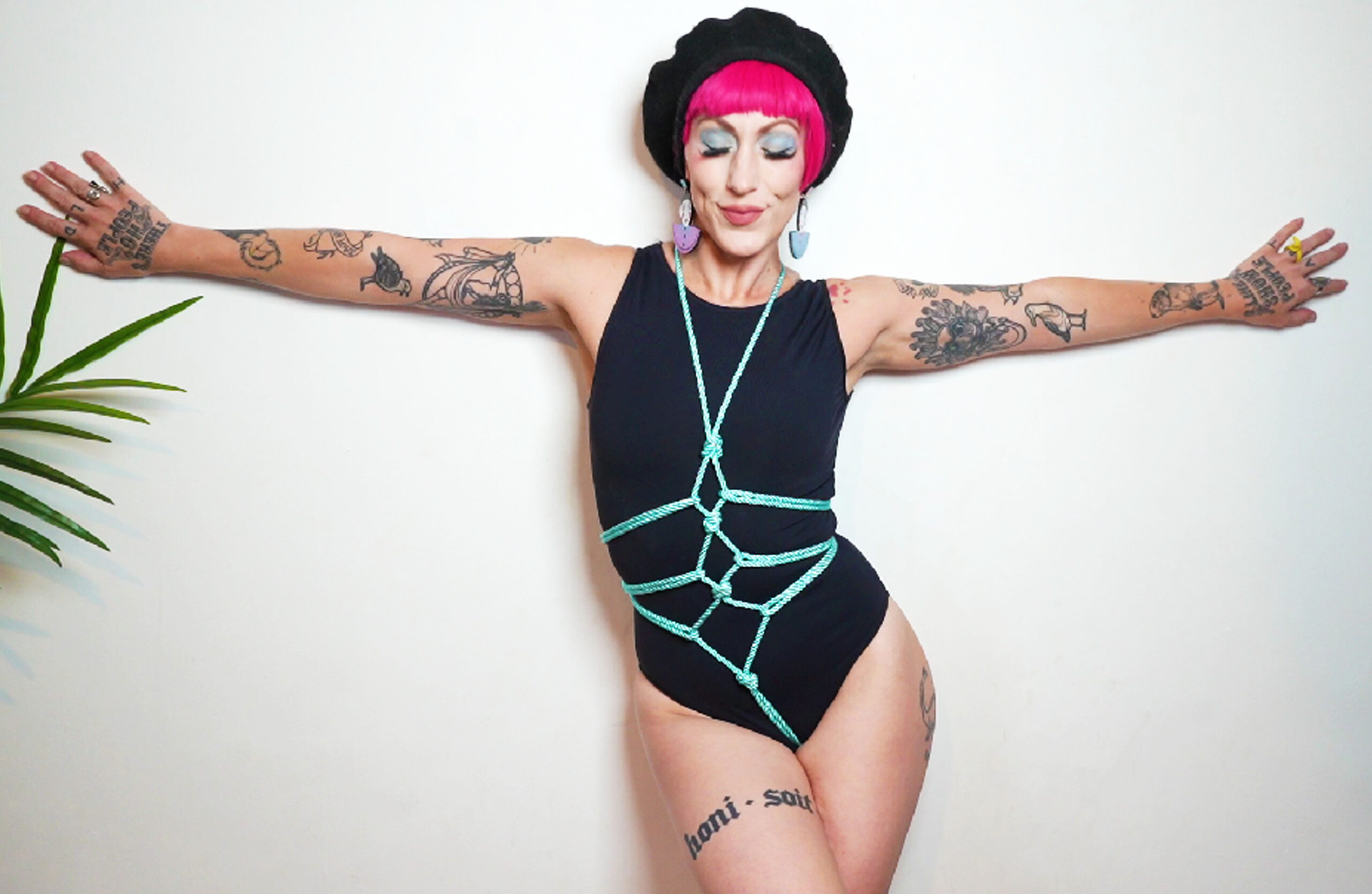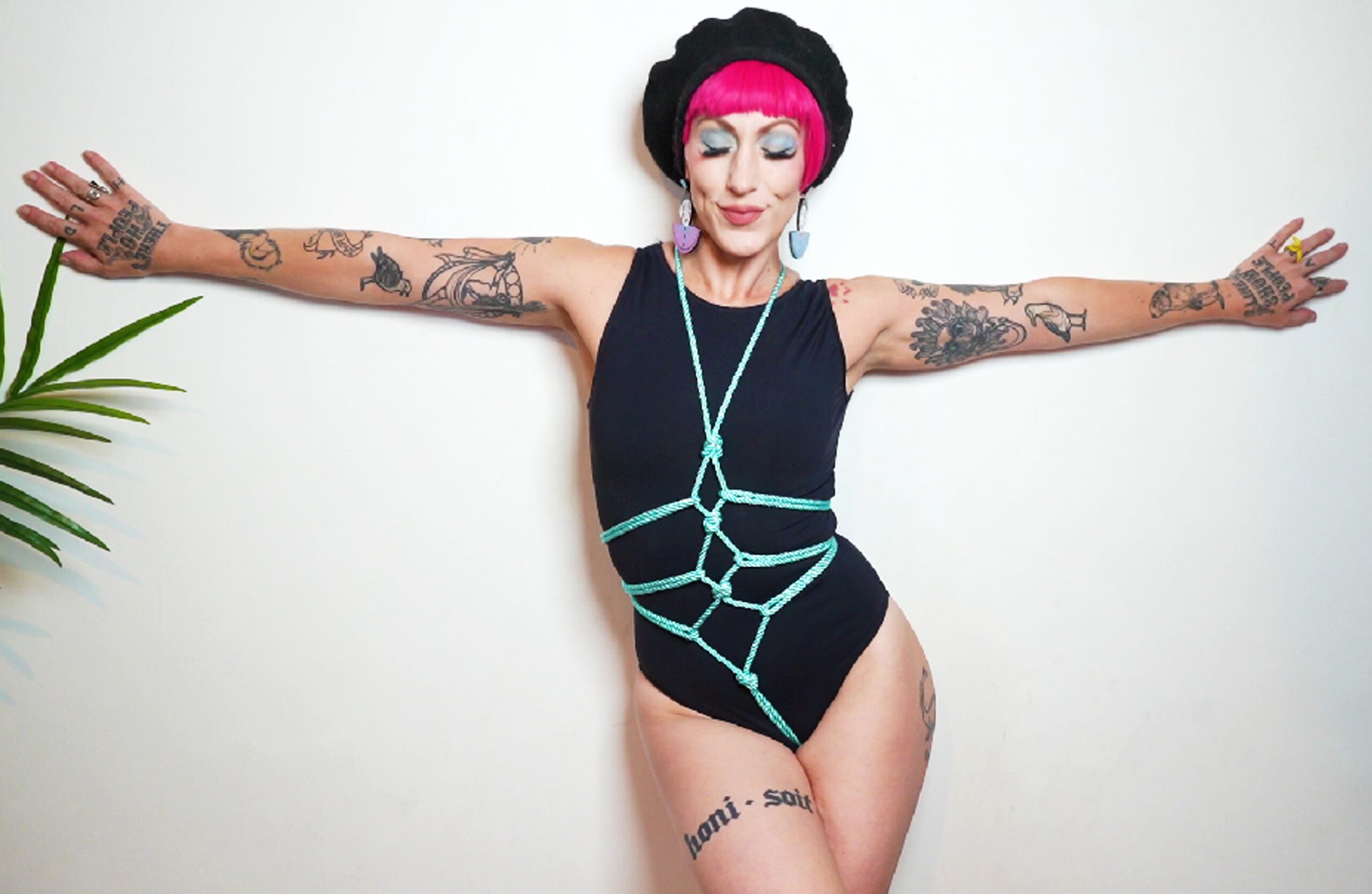Defining Autogynephilia Fetish
Autogynephilia fetish is a complex and multifaceted concept that intersects with gender identity, eroticism, and personal desire. It refers to the arousal or sexual attraction felt by an individual towards their own gender, often in the form of fantasizing about oneself as a member of one’s preferred gender. This phenomenon can be deeply personal and sensitive, raising questions about the boundaries between self-identification, fantasy, and reality.
The Term Autogynephilia
Autogynephilia, in its most common usage in language English, refers to an erotic preference for one’s own gender identity, specifically a strong desire to be female or male. This concept can be understood as a complex intersection of gender and sexuality, often overlapping with other psychological, social, and cultural factors.
This term is gaining more attention in recent years due to the growing need to explore and understand non-normative expressions of gender and sexuality.
- Autogynephilia can manifest in various ways, including a strong attraction to one’s own body, fantasies about oneself as a different gender, or experiences of sexual arousal related to gender identity.
The concept is often linked to the idea of a “gynephilic” person who desires to be female, but this can vary widely depending on individual experiences and expressions.
- It’s essential to recognize that autogynephilia is not inherently problematic or abnormal; however, societal attitudes toward gender expression and identity can significantly impact how individuals navigate their desires.
Moreover, understanding autogynephilia requires an awareness of the broader cultural context in which gender and sexuality are constructed and perceived. The interplay between individual desire, social norms, and power structures plays a significant role in shaping our comprehension of this concept.

Historical Background
Autogynephilia fetish refers to a complex and multifaceted phenomenon where an individual experiences intense erotic arousal from fantasizing about being female or identifying with femininity in their own mind’s eye. This concept is often misconstrued as simply a matter of transphobia or discomfort with one’s own gender identity, but it is essential to approach it with nuance and sensitivity.
The term “autogynephilia” was coined by Dr. Raymond SkSecin in 1993 to describe this specific type of fetish. It is characterized by a distinct blend of gender dysphoria and eroticism, where the individual experiences intense pleasure from imagining themselves as the object of their own sexual desire. This can manifest in various ways, such as fantasizing about having breasts, enjoying feminine physical sensations, or experiencing pleasure from dressing up in female clothing.
Autogynephilia fetish has its roots in the field of sexology and psychology, where researchers have long sought to understand the intricacies of human sexual behavior. In recent years, there has been growing interest in exploring the intersectionality of gender and sexuality, particularly in relation to non-heteronormative and non-cisnormative identities.
Historically, autogynephilia fetish has been subject to misconceptions and stigmatization, often being lumped together with other issues such as transphobia or sex addiction. However, recent studies have sought to deconstruct this complex phenomenon, recognizing it as a legitimate aspect of human sexuality that warrants further exploration.
It is crucial to acknowledge that autogynephilia fetish can manifest in different ways and affect individuals from diverse backgrounds. Understanding its complexities requires a multidisciplinary approach, incorporating insights from psychology, sociology, anthropology, and feminist theory. By exploring this topic with sensitivity and nuance, we can work towards a more inclusive and accepting cultural landscape.
Psychological and Sociological Perspectives
The complexities of human sexuality and identity have long been explored through various lenses, two of which are Psychological and Sociological Perspectives in language. These frameworks offer unique insights into the intricacies of autogynephilia fetish, a phenomenon where individuals experience erotic arousal from fantasizing about being a woman or identifying as a female. By examining the intersections of gender and erotica, researchers can gain a deeper understanding of how societal norms, psychological factors, and cultural influences shape this complex and often stigmatized aspect of human desire.
Theories of Autogynephilia
Autogynephilia fetish refers to a complex and multifaceted phenomenon where an individual experiences sexual arousal or satisfaction from imagining themselves as a woman, often in conjunction with feelings of affection, attachment, or intimacy with their own female self-image.
From a psychological perspective, autogynephilia can be understood as a form of self-eroticism, wherein the individual’s sense of self and identity becomes intertwined with their erotic experiences. This can lead to a blurring of boundaries between one’s internal sense of self and external representations of femininity.
Sociological perspectives on autogynephilia highlight the role of societal norms, cultural expectations, and power dynamics in shaping an individual’s desires and identifications. For example, some researchers argue that autogynephilia can be seen as a manifestation of societal pressure to conform to traditional feminine ideals, leading individuals to internalize these standards and project them onto their own female self-image.
Other sociological perspectives view autogynephilia as a form of resistance or subversion to dominant power structures. By embracing and exploring same-sex attractions towards oneself, individuals may be challenging traditional notions of gender, sexuality, and identity.
Theories such as ego-dystonic homosexuality, which suggests that the attraction is in conflict with an individual’s self-image, can also be applied to autogynephilia. Additionally, the concept of internalized heterosexism, wherein individuals adopt societal norms and expectations of masculinity or femininity, may also be relevant to understanding autogynephilia.
Furthermore, theories from feminist and queer perspectives, such as the work of Judith Butler on performativity and gender, can help illuminate the ways in which autogynephilia challenges traditional notions of identity, desire, and embodiment.
It is essential to note that autogynephilia is a complex and multifaceted phenomenon, and no single theoretical framework can fully capture its nuances. A comprehensive understanding of autogynephilia requires an interdisciplinary approach, incorporating insights from psychology, sociology, philosophy, and feminist theory.
Neurological Aspects
The concept of autogynephilia fetish is a complex and multifaceted phenomenon that has garnered significant attention in recent years, particularly within the fields of psychology, sociology, and neuroscience. At its core, autogynephilia refers to a sexual attraction towards one’s own gender identity, which can manifest as a strong desire for physical contact or intimacy with oneself.
From a psychological perspective, researchers have identified various theories that attempt to explain the underlying causes of autogynephilia fetish. One such theory is the “drive-reduction” theory, which suggests that individuals with autogynephilia fetish experience feelings of arousal and tension when they are unable to express their gender identity in a way that feels authentic to them. Another perspective posits that autogynephilia fetish can be understood as a form of self-identification, where the individual seeks to connect with their own body and explore their desires in a safe and controlled environment.
Sociological perspectives on autogynephilia fetish emphasize the importance of societal context and cultural norms. For example, some researchers argue that autogynephilia fetish can be seen as a form of resistance against dominant patriarchal norms, where individuals seek to challenge traditional notions of masculinity and femininity through their desires.
From a neurological standpoint, research has shown that autogynephilia fetish is associated with activity in brain regions involved in reward processing, such as the ventral striatum and nucleus accumbens. This suggests that individuals with autogynephilia fetish may experience feelings of pleasure and arousal when engaging in activities that allow them to express their gender identity in a way that feels authentic.
However, it is essential to note that autogynephilia fetish is not universally accepted within the scientific community, and some researchers have raised concerns about the ethics and implications of studying this phenomenon. Additionally, more research is needed to fully understand the complexities and nuances of autogynephilia fetish, particularly in terms of its relationship with broader issues such as mental health, identity, and trauma.
Etiology and Developmental Factors
Autogynephilia fetish, a complex and multifaceted concept, has garnered significant attention in recent years due to its intricate relationship between gender identity and eroticism. At its core, autogynephilia refers to the experience of deriving sexual pleasure from imagining oneself as a female or identifying with feminine characteristics. This phenomenon is often shrouded in controversy, given its intersection with issues surrounding gender, sexuality, and fetish culture.
Possible Causes of Autogynephilia
Autogynephilia fetish is a complex phenomenon that involves a strong emotional or erotic attachment to one’s own genitalia, often accompanied by feelings of gender identity confusion or incongruence. The etiology of autogynephilia is multifaceted and not yet fully understood, with various theories attempting to explain its development.
One possible explanation for the onset of autogynephilia lies in the realm of developmental psychology. Research suggests that early childhood experiences, such as exposure to one’s own body or repeated play with one’s genitalia, may contribute to the emergence of this fetishistic desire. Additionally, factors like social learning theory, where an individual learns to associate their own body with pleasure or eroticism through observation or experience, could also play a role.
From a psychological perspective, autogynephilia has been linked to various underlying issues, including anxiety, low self-esteem, and attachment disorders. For some individuals, the fetishistic desire may serve as a coping mechanism for feelings of inadequacy or distress related to their own body or sex life. Furthermore, neurobiological factors, such as abnormalities in brain regions responsible for processing self-referential information or reward, may contribute to the development of autogynephilia.
Other theories propose that autogynephilia is linked to broader cultural and societal influences, including the objectification of women’s bodies and the blurring of lines between masculine and feminine desires. In this context, autogynephilia can be seen as a manifestation of a more pervasive cultural trend towards normalization of excessive interest in one’s own body or eroticism.
It is essential to note that the relationship between autogynephilia and these factors is complex and not always straightforward. More research is needed to fully understand the etiology of this phenomenon, as well as its implications for individual mental health and overall well-being.
Developmental Patterns

Autogynephilia fetish is a complex phenomenon that involves a fascination with one’s own female gender identity, often accompanied by erotic or sensual feelings towards oneself as a woman.
The etiology of autogynephilia fetish is not yet fully understood, but research suggests that it may be influenced by a combination of biological, psychological, and social factors. Some theories propose that autogynephilia fetish arises from a distortion in the way individuals process their own gender identity, leading to a blurring of the lines between self and other.
Developmental factors also play a significant role in shaping the expression of autogynephilia fetish. Early childhood experiences, such as exposure to stereotypical feminine roles or social interactions with caregivers, may contribute to the development of a fetishistic attachment to one’s own female body.
Furthermore, cultural and societal influences can shape an individual’s perception of their own gender identity, leading to the creation of autogynephilia fetish. The normalization of heteronormative beauty standards, for example, may lead individuals to idealize their own female bodies as a means of self-acceptance.
Developmental patterns in language can also contribute to the expression of autogynephilia fetish. Research has shown that exposure to linguistic cues associated with femininity at an early age can shape an individual’s perception of their own gender identity, leading to increased attachment to female characteristics.
Interestingly, some studies have found that individuals who exhibit autogynephilia fetish often report a strong desire for connection and intimacy with others, particularly women. This may suggest that the fetish serves as a coping mechanism for feelings of loneliness or disconnection.

Cultural and Social Implications
Language plays a significant role in shaping our perceptions of gender and sexuality, and English, as a global lingua franca, is no exception. In recent years, there has been an increasing visibility of terms that challenge traditional binary notions of gender, such as autogynephilia fetishism. This phenomenon involves a complex intersection of gender identity, eroticism, and fantasy, raising important questions about the social and cultural implications of language on our understanding of human sexuality.
Societal Stigma and Taboo
The concept of autogynephilia fetish, which involves deriving erotic pleasure from imagining oneself as female or cross-dressing as a woman, raises significant cultural and social implications. At its core, autogynephilia challenges traditional notions of gender identity and sexual orientation, sparking debates about the boundaries between self-identification and objectification.
The societal stigma surrounding autogynephilia is multifaceted, stemming from concerns about the commodification of one’s own body image and the blurring of lines between fantasy and reality. Critics argue that autogynephilia fetishization can perpetuate the objectification of women, reinforcing patriarchal power structures and further entrenching misogynistic attitudes.
Furthermore, the intersectionality of gender and eroticism in autogynephilia raises important questions about the cultural construction of desire and the ways in which societal norms shape our perceptions of sex and identity. Autogynephilia can be seen as a manifestation of the complex, often conflicting desires that underlie human sexuality.
However, proponents of autogynephilia argue that their experiences challenge traditional binary thinking on gender and sex, promoting greater understanding and acceptance of diversity in human expression. By examining the complexities of autogynephilia fetish, we may uncover new insights into the intersections of culture, identity, and desire.
The taboo surrounding autogynephilia also highlights the need for more nuanced discussions around gender nonconformity, self-identification, and eroticism. As society continues to evolve and challenge traditional norms, it is essential to approach these topics with sensitivity, empathy, and an openness to diverse perspectives.
Autogynephilic Communities and Support Systems
Autogynephilic communities and support systems play a crucial role in addressing the complex intersection of gender and erotica surrounding autogynephilia.
Autogynephilic individuals often face significant social stigma and marginalization, which can exacerbate feelings of isolation and shame. As such, the creation of community-based support systems is essential for fostering a sense of belonging and acceptance among individuals who identify as autogynephilic.
Online forums and social media groups have emerged as vital spaces for autogynephilic individuals to share their experiences, connect with others, and access resources and information. These platforms provide a safe haven for individuals to explore their desires and identities without fear of judgment or rejection.
The development of community-based support systems also raises important questions about the role of fetish culture in perpetuating or challenging traditional notions of gender and sexuality. While some critics argue that autogynephilic fetishes reinforce patriarchal power dynamics, others contend that these communities provide a much-needed outlet for self-expression and exploration.
Moreover, the existence of support systems can help to challenge dominant cultural narratives surrounding gender and desire. By centering the experiences and perspectives of autogynephilic individuals, we can work towards a more nuanced understanding of the complexities of human sexuality and gender identity.
Ultimately, the creation of inclusive and supportive communities is crucial for promoting the well-being and self-acceptance of autogynephilic individuals. By acknowledging the importance of community-based support systems, we can take a vital step towards fostering greater acceptance and understanding of this often-marginalized population.
Treatment Options and Therapy
When it comes to addressing autogynephilia fetish, treatment options and therapy are crucial components in managing the condition’s impact on an individual’s life.
A multidisciplinary approach that incorporates elements of psychology, psychotherapy, and medical care is often necessary to effectively treat autogynephilia fetish. This may involve a combination of cognitive-behavioral therapy, psychodynamic therapy, and other forms of talk therapy to address underlying psychological issues and develop healthier coping mechanisms.
Medically, treatment may focus on addressing any co-occurring physical health issues or mental health concerns, such as anxiety or depression. Hormone replacement therapy or other medical interventions may also be considered in some cases, although these are typically reserved for individuals who meet specific diagnostic criteria and have been deemed suitable for such treatment.
In addition to individual therapy sessions, support groups and online forums can provide valuable opportunities for individuals with autogynephilia fetish to connect with others who share similar experiences and challenges. By leveraging a range of treatment options and therapeutic approaches, it is possible to develop effective strategies for managing the condition and improving overall quality of life.
Psychotherapeutic Approaches
Autogynephilic fetish, also known as autoerotic dysphoria or auto-gynephilia, is a complex phenomenon that intersects with gender identity and eroticism. Individuals who experience autogynephilic fetish often have a strong desire to engage in self-stimulation that mimics the sensation of sexual intimacy with someone of the opposite sex. This can manifest as masturbation with doll-like or masculine-themed objects, or other forms of autoerotic behavior.
Psychotherapeutic approaches are essential in understanding and addressing autogynephilic fetish. Cognitive-behavioral therapy (CBT) has been effective in helping individuals identify and change negative thought patterns and behaviors associated with their fetish. Psychodynamic therapy can also be useful in exploring the underlying emotions, desires, and childhood experiences that contribute to the development of autogynephilic fetish.

Other therapeutic approaches that may be helpful include exposure therapy, which involves gradually exposing individuals to the object or situation that triggers their fetish, while promoting healthy coping mechanisms. Additionally, trauma-informed care can be beneficial in addressing any underlying traumatic experiences that may contribute to the development of autogynephilic fetish.
Group therapy and support groups can also provide a safe space for individuals with autogynephilic fetish to share their experiences and connect with others who are going through similar struggles. Online resources and forums can offer additional support and guidance, as well as connect individuals with mental health professionals who specialize in treating autogynephilia.
It is essential to note that addressing autogynephilic fetish requires a comprehensive treatment plan that takes into account the individual’s unique needs, desires, and circumstances. A mental health professional can work closely with the individual to develop a personalized treatment plan that incorporates multiple therapeutic approaches and fosters a supportive environment for growth and change.
Medications and Other Interventions
Autogynephilia fetish, also known as sexual fascination with one’s own genitalia as female, is a complex and multifaceted phenomenon that raises questions about the intersections of gender, sexuality, and eroticism.
When it comes to treatment options for autogynephilia fetish, various interventions can be employed. These may include psychotherapies such as cognitive-behavioral therapy (CBT), psychodynamic therapy, or humanistic therapy, which focus on understanding the underlying motivations and emotional drivers behind the fetish. In some cases, medication like selective serotonin reuptake inhibitors (SSRIs) might be prescribed to help manage any co-occurring anxiety or depression.
Other interventions for autogynephilia fetish may involve education about gender identity, exploration of body image issues, and the development of coping strategies. Some individuals may also find it beneficial to engage in group therapy or online forums where they can share their experiences and connect with others who are going through similar challenges.
Further treatment options for autogynephilia fetish could include hormone replacement therapy (HRT) or other medical interventions that aim to alter an individual’s physical body to align more closely with their gender identity. In some instances, individuals may choose to undergo genital surgery as a means of achieving greater satisfaction and self-acceptance.
Medications like anti-androgens have also been explored as potential treatments for autogynephilia fetish. These medications can help reduce male hormone levels, which in some cases may alleviate the distressing aspects of the fetish.
In addition to these interventions, several alternative approaches have gained traction among individuals who identify with autogynephilia fetish. These include practices like meditation, mindfulness, and yoga, which focus on promoting emotional regulation, body awareness, and self-acceptance. Some advocates also argue that therapy should prioritize acceptance and inclusivity over pathologization and treatment.
Shop ben-wa balls and jiggle balls for internal stimulation at Peaches and Screams Discover Silicone Sex Toys for safe, body-friendly pleasure at Peaches and Screams Explore Creative Conceptions for exciting and innovative toys at Peaches and Screams Shop sexy party wigs for a fun and daring look at Peaches and Screams Buy love rings for added pleasure at Peaches and Screams Shop realistic butts for lifelike sensations at Peaches and Screams Shop Colt products at Peaches and Screams
Pretty Little Answers Canniant Alkhemist LA
- Why Does My Lip Filler Dissolve So Fast - November 5, 2025
- Why Does My Lip Filler Dissolve So Fast - November 5, 2025
- What Is The Danger Zone For Tear Trough Fillers? - November 4, 2025
